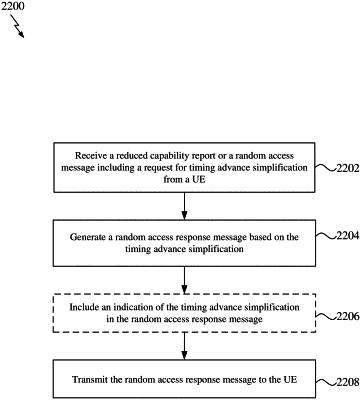| CPC H04W 56/0045 (2013.01) [H04W 72/0453 (2013.01); H04W 72/23 (2023.01); H04W 74/0833 (2013.01); H04W 76/11 (2018.02); H04W 76/19 (2018.02); H04W 76/27 (2018.02); H04W 80/02 (2013.01)] | 26 Claims |

|
1. A method of wireless communication at a user equipment (UE), comprising:
entering an idle state or an inactive state;
transmitting a random access message that triggers timing advance simplification to a serving base station based on a timing advance value corresponding to the serving base station, wherein the timing advance value is applied to the transmission of the random access message; and
receiving a response message based on the timing advance simplification, wherein the response message is in response to the random access message and includes an indication of the timing advance simplification, wherein the indication indicates that the response message excludes a timing advance (TA) media access control (MAC) control element (CE), and wherein the response message is received without the TA MAC CE.
|